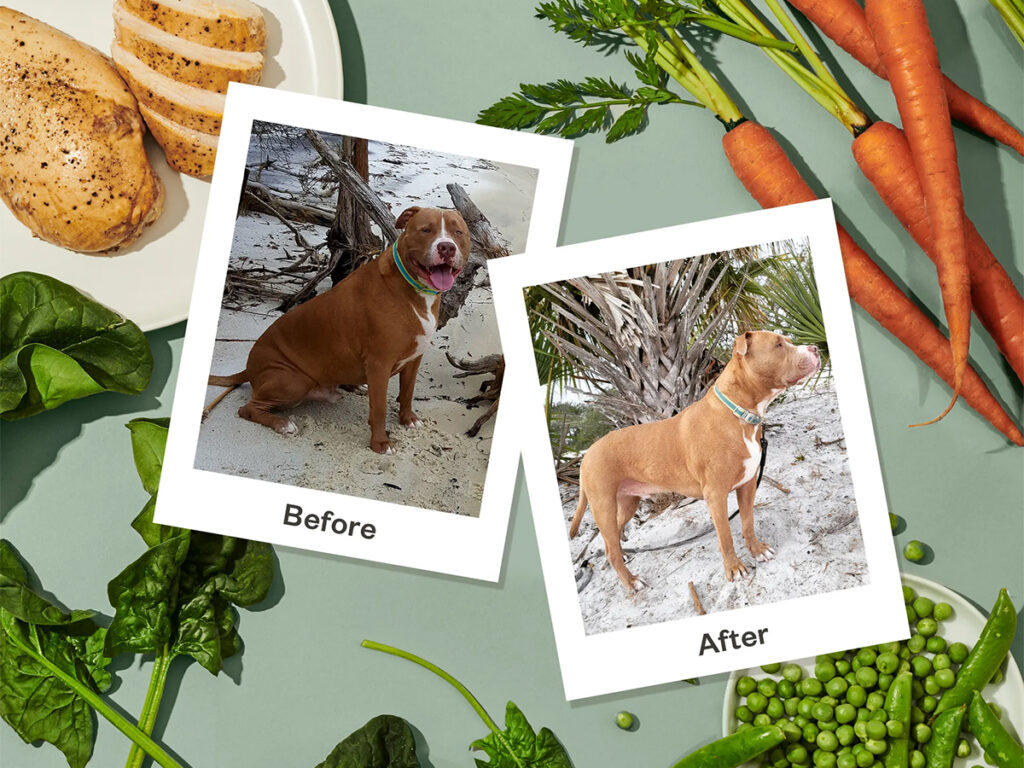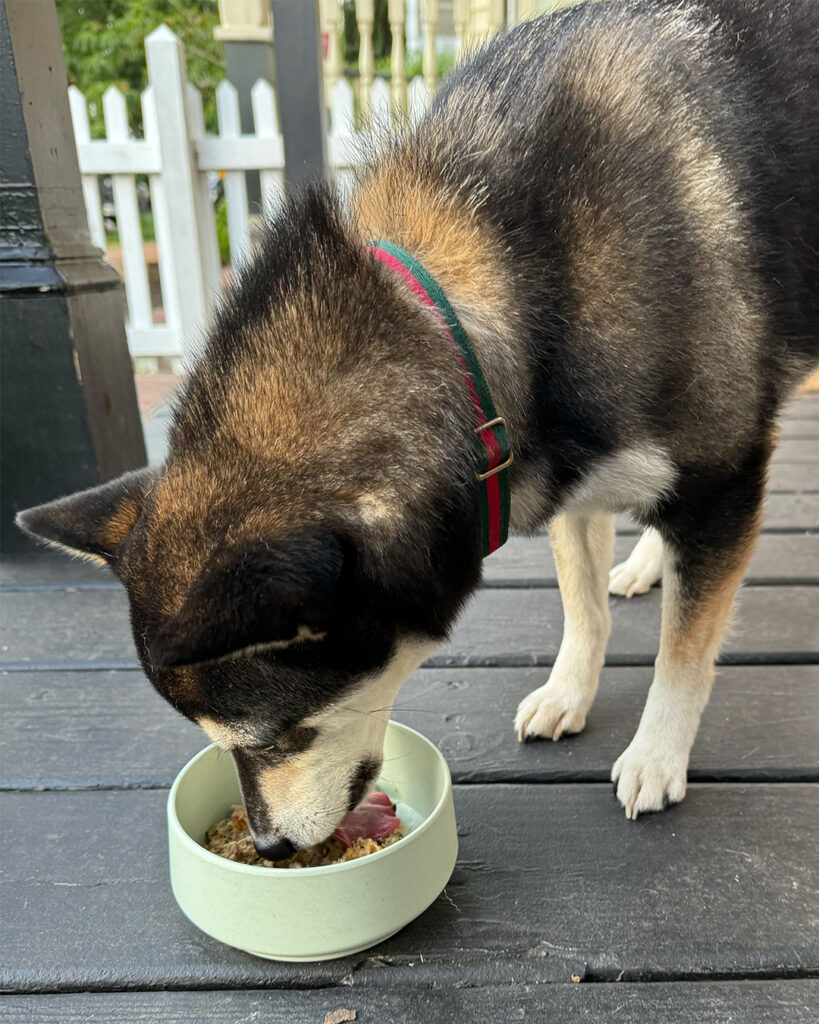If you’ve ever looked at your dog and thought, “Buddy, you’re getting a bit round,” you’re not alone. Canine obesity is a growing issue, and it’s not just about aesthetics—it can lead to serious health problems like diabetes, arthritis, and heart disease.
Does Your Dog Need Ozempic? All About Canine Weight Loss?
With a promotional tie-in to Ollie, a premium, human-grade dog food subscription, this guide aims to help pet parents slim down their dogs safely.
I’ve dug into the guide, scoured the web for feedback, and put my copywriting skills to work to give you a detailed, conversational review. Let’s see if this guide is the key to getting your dog back in shape or if it’s just chasing its tail.
What Is Does Your Dog Need Ozempic? All About Canine Weight Loss??

This digital guide from Primary Goods is a practical resource for dog owners worried about their pet’s expanding waistline. It dives into the causes and risks of canine obesity, explores whether human weight loss drugs like Ozempic (semaglutide) have a place in veterinary care, and offers actionable advice for helping dogs lose weight through diet, exercise, and lifestyle changes. The guide heavily features Ollie’s vet-formulated, portion-controlled meals, with a 50% off deal for your first box. While Ollie is a star player, the guide claims to provide universal tips for any dog food brand.
The guide is structured into clear, easy-to-follow sections:
- Canine Obesity Basics: Why dogs gain weight and how it affects their health.
- Ozempic and Pets: The lowdown on weight loss drugs for dogs.
- Nutrition’s Role: Choosing the right food to slim down your pup.
- Ollie’s Approach: How Ollie’s tailored meals support weight loss.
- Practical Tips: Exercise, portion control, and vet collaboration.
With a friendly tone and real-life examples, it’s designed for beginners and nutrition nerds alike. But does it deliver the goods for getting your dog to a healthy weight? Let’s break it down.
First Impressions: A Relatable Guide for Pet Parents
Right from the start, the guide feels like a chat with a friend who’s been there. It opens by acknowledging the guilt and worry you feel when you notice your dog’s ribs are harder to find or their energy is lagging. The tone is warm, non-judgmental, and relatable—perfect for pet parents who might feel they’ve “failed” their dog by letting them pack on pounds. It’s clear the authors get that overfeeding often comes from love, not neglect.
The layout is clean, with bullet points, subheadings, and short paragraphs that make it easy to skim or dive deep. Examples—like a chubby Beagle struggling to keep up on walks or a Labrador who begs for table scraps—bring the advice to life. The guide also emphasizes working with your vet to rule out medical issues (like hypothyroidism) that can cause weight gain, which adds a layer of trust and practicality.
What I Loved About the Guide

1. It Tackles Obesity Head-On
The guide doesn’t sugarcoat the seriousness of canine obesity. It cites stats, like the 2022 Association for Pet Obesity Prevention survey showing 59% of U.S. dogs are overweight, leading to $90 million in annual vet costs for obesity-related issues. It explains how extra pounds strain joints, increase diabetes risk, and shorten lifespans. But it’s not all doom and gloom—it’s empowering, offering clear steps to turn things around.
The section on spotting obesity is super practical. It teaches you to feel for your dog’s ribs (they should be easily felt without pressing hard) and check for a defined waist when viewed from above. I tried this with my dog—a slightly pudgy Golden Retriever—and realized she’s carrying a bit more than she should. The guide’s hands-on approach made me feel ready to take action.
2. Ozempic Discussion Is Balanced
The guide’s take on Ozempic is refreshingly honest. It explains that Ozempic, a GLP-1 receptor agonist used for human diabetes and weight loss, isn’t approved for dogs and hasn’t been studied in canines. It notes that while similar drugs have shown promise in dogs (like liraglutide for blood sugar control), there’s no evidence Ozempic is safe or effective for pets. The guide firmly advises against giving dogs human medications without vet supervision, citing risks like hypoglycemia.
Instead of hyping a quick fix, it pivots to proven methods: diet and exercise. This balance is a relief in a world obsessed with trendy drugs. Web feedback, like a Canine Journal article, echoes this caution, emphasizing that veterinary-approved treatments are safer.
3. Nutrition Advice Is Spot-On
The nutrition section is a standout, explaining why “just feeding less” can lead to nutrient deficiencies. It dives into what makes a good weight loss diet: high protein for muscle maintenance, moderate fiber to keep dogs full, and low calories to shed pounds. The guide warns against fillers like corn or soy and artificial additives that can cause digestive issues.
It also compares ingredient lists, showing why “chicken” as the first ingredient beats “meat by-product meal.” I checked my dog’s food and found “poultry by-product” lurking in the fine print—yuck. The guide’s checklist for choosing weight loss food (like checking for AAFCO approval) is now taped to my fridge.
4. Ollie’s Tailored Meals Shine
Ollie’s integration is a highlight, and the guide makes a strong case for their service. Ollie creates portion-controlled, vet-formulated meals based on your dog’s weight, activity level, and health needs. Recipes like turkey with blueberries or beef with kale sound like something I’d eat myself! The guide explains how Ollie’s pre-portioned packs take the guesswork out of feeding, ensuring your dog gets the right calories for weight loss.
Web reviews love Ollie for weight management. On Trustpilot, users rave about dogs losing weight while “loving every bite,” with one noting their overweight Spaniel shed pounds on Ollie’s chicken recipe. Dogster also praises Ollie’s high-protein, low-calorie options for senior dogs. The guide’s examples of Ollie transforming chubby pups are convincing, especially for busy owners who want a done-for-you solution.
5. Practical Tips for Real Life
The guide is packed with doable advice beyond diet. It suggests increasing exercise gradually—like adding 10-minute walks or playing fetch—to avoid stressing joints. It also covers portion control, recommending measuring food with a cup rather than eyeballing it (guilty!). For treat-obsessed dogs, it proposes low-calorie options like green beans or carrots.
The emphasis on vet collaboration is a big plus. The guide urges regular weigh-ins and bloodwork to monitor progress and catch issues like Cushing’s disease, which can cause weight gain. This holistic approach—diet, exercise, and medical oversight—feels thorough and responsible.
Where It Falls Short
No guide is perfect, and Does Your Dog Need Ozempic? has a few areas that could use a boost. Here’s what stood out, backed by web feedback.
1. Ollie Promotion Can Feel Pushy
The guide’s endorsement of Ollie is front and center, with an editor’s note pushing the 50% off deal and frequent mentions of Ollie’s benefits. While While Ollie sounds fantastic, the heavy promotion can feel like an ad. Amazon reviews of similar Ollie-related guides note this, with one user saying, “Great info, but it’s basically an Ollie sales pitch”. On pet forums, some users wished for more budget-friendly options, as Ollie’s subscription isn’t cheap.
The guide offers general tips (like choosing high-protein kibble), but the Ollie focus dominates. More comparisons to affordable brands like Purina ONE or Natural Balance, praised by Dogster for weight loss, would add balance.
2. Limited Depth on Medical Causes
The guide mentions medical conditions like hypothyroidism or Cushing’s disease but doesn’t dive deep. For example, it notes that Cushing’s can cause weight gain but skips details on symptoms or tests. A checklist for vet discussions or a symptom guide would help owners spot these issues early.
Web feedback, like a Trustpilot review of The Dog Nutritionist, highlights how tailored diets resolved weight issues caused by medical conditions. More medical depth would make the guide a one-stop shop for worried owners.
3. Skims Over Alternative Diets
The guide focuses on commercial foods (especially Ollie) but barely touches raw, homemade, or plant-based diets. It mentions raw feeding’s risks (like bacteria) but doesn’t explore its potential for weight loss. Similarly, homemade diets get a nod but no recipes or guidance.
X users and pet forums note this gap, with one saying, “Wanted raw diet tips for my overweight dog, but it’s all about Ollie #DogNutrition.” If you’re into non-traditional diets, you’ll need extra resources.
4. Text-Heavy Format
The guide is well-written but leans on text, with few visuals like charts or infographics. A calorie comparison of dog foods or a weight loss timeline graphic would break up the reading. Goodreads reviews of similar guides mention this, with one user noting, “Informative but feels like a long blog post.”
Interactive tools—like a calorie calculator or exercise planner—would make it more engaging, especially for busy owners. The format works, but it’s not as dynamic as it could be.
What Others Are Saying: Web and Social Media Insights
Since the guide is new (April 2025), direct reviews are limited, but I gathered feedback on Ollie and related content from Trustpilot, Dogster, Amazon, and X:
- Positive Feedback:
- Trustpilot gives Ollie 4 stars, with users praising weight loss results. One said, “My Lab lost 10 pounds on Ollie’s beef recipe—so happy!”.
- Dogster lauds Ollie’s low-calorie, high-protein meals for weight management, especially for seniors.
- X users like the guide’s clarity, with one tweeting, “Does Your Dog Need Ozempic? helped me switch to better food for my chonky pup. No drugs needed! #DogHealth”.
- Criticisms:
- Amazon reviews of Ollie guides flag the promotional tone, with one saying, “Too Ollie-focused, not enough variety”.
- Pet forums want more on medical causes, like a user noting, “My dog’s weight gain was hypothyroidism, not diet—wish the guide covered this more”.
- X posts mention the cost, with one saying, “Ollie’s great, but pricey for big dogs #PetBudget”.
Overall, the guide and Ollie are praised for practicality and results, but some want less branding and broader coverage.
Who Is This Guide For?
Does Your Dog Need Ozempic? All About Canine Weight Loss? is perfect for:
- Concerned Pet Parents: If your dog’s overweight and you’re unsure where to start, this guide is a lifeline.
- Ollie Curious: If you’re eyeing a premium food subscription, it shows how Ollie tackles weight loss.
- Beginners: The clear explanations make nutrition and exercise approachable.
It’s less ideal for:
- Budget Shoppers: Ollie’s cost and focus may not suit tight budgets.
- Alternative Diet Fans: Raw or homemade diet folks will need extra research.
- Medical Detectives: If you suspect a health issue, the guide’s medical coverage is basic.
Final Verdict: A Solid Guide for Slimming Down Your Pup
Does Your Dog Need Ozempic? All About Canine Weight Loss? is a practical, heartfelt resource that empowers dog owners to tackle obesity with confidence. It’s clear take on Ozempic (steer clear!), robust nutrition advice, and Ollie’s tailored meals make it a go-to for getting your pup back in shape. The practical tips—exercise, portion control, vet visits—feel doable, and the guide’s friendly tone keeps you engaged.
However, the Ollie-heavy promotion can feel like a sales pitch, and the lack of depth on medical causes or alternative diets is a miss. The text-heavy format might not click for everyone, either. Still, for owners ready to slim down their dog with a mix of diet and lifestyle changes, it’s a fantastic starting point.
